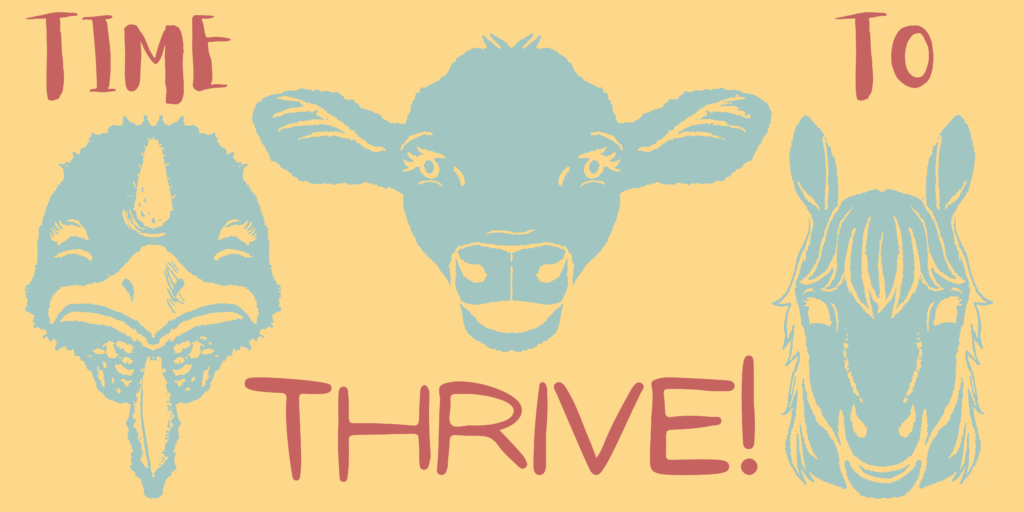
When caring for residents, it is easy for enrichment to be thought of as an “extra”, or optional provision. Care staff are understandably focused on providing the necessary food, water, health care, and housing residents need to live. The thought of adding more to an already long list of daily caregiving duties can be overwhelming. That is why we are working on this series of enrichment resources to gently introduce you to different aspects of establishing a successful enrichment program at your sanctuary! Over the course of the series, we will discuss everything from the types of enrichment, how you can decide where to start, tips for inexpensive enrichment, and different scheduling approaches you can try in order to find what works best at your sanctuary. There is no one size fits all approach! By incorporating enrichment as an aspect of general care, the lives of residents can be greatly improved. There are many ways enrichment can look and be introduced to residents at sanctuaries. But before we delve into those topics, let’s first define what enrichment is and discuss why it is so important!
What Is Enrichment?
Let’s define what enrichment is and what it isn’t:
The Oxford Learners Dictionary defines enrichment as: “the act of improving the quality of something, often by adding something to it”
By this definition, enrichment would be improving the lives of residents. However, enrichment only counts if the individual finds it enriching! If a resident finds something frightening, threatening, or just doesn’t give two hoots, then it isn’t enrichment! It is important for that reason to really think about the species and individual when considering enrichment options. For example, goats as a species may find variable terrain and options for climbing or jumping enriching. However, Joanie the goat has arthritis. While she may find this enriching, care must be taken that the enrichment is provided in a way that considers her personal health needs as well. Providing variable terrain options is an example of physical/structural enrichment. We will go into this and other types of enrichment, such as nutritional, sensory, cognitive, social in our next resource! We will also go into species and individual considerations and enrichment strategies later. For now, let’s take a closer look at the case for enrichment as part of general care.
Enrichment Is Well Worth The Time Investment!
We know you have your hands full managing a sanctuary and probably never seem to have enough time. However, developing enrichment plans for species, particular groupings of residents, and individuals can actually help you save time and money in the future! Residents who are provided individualized enrichment are more likely to feel mentally stimulated, experience positive emotions, and are more likely to perform satisfying natural behaviors that can help mental and physical health. Happier residents heal more quickly than stressed individuals, and residents with enriched environments may be less likely to engage in confrontationalBehaviors such as chasing, cornering, biting, kicking, problematic mounting, or otherwise engaging in consistent behavior that may cause mental or physical discomfort or injury to another individual, or using these behaviors to block an individual's access to resources such as food, water, shade, shelter, or other residents. or stereotypic behaviors.

Why Is Enrichment Important?
It is easy to think that water, food, shelter, and veterinary care make up all of an animal’s basic needs. While these are vital to survival, at sanctuaries we strive for residents to thrive, not just survive. We know it can be difficult to think of enrichment when you have many residents to care for and an endless list of tasks to finish. However, it can completely change the mental, emotional, and physical lives of residents for the better!

At sanctuaries, we believe that it’s important to move beyond the single act of rescuing and embrace the “thrive versus survive” philosophy, which involves providing a quality of care that enhances the lives of those rescued in the long term.

Capacity For Responsible Care
This is also where capacity for responsible care can come into play. This is one of the toughest parts in that it requires sanctuaries to make hard decisions regarding the number of animals you can take in and still provide quality care for, without reducing the quality of care other residents receive. The ability to provide residents with enriching lives should be a factor when developing budgets and addressing capacity for responsible care.
It isn’t hard to imagine how it feels to sit in an empty room, with nothing to do but eat for a bit, drink for a bit, say a brief hello to a friend that drops in to hand you some freshwater or a piece of fruit and….what now? While needs vary from species to species and between individuals, we have a shared need for living an interesting life. A dynamic living spaceThe indoor or outdoor area where an animal resident lives, eats, and rests. (read our resource on animal-centered design!) that provides cognitive challenges, promotes curiosity, engagement, and exploration can greatly benefit residents in a number of ways.
Benefits Of Enrichment
Here are some of the benefits of enrichment at a glance:
Mental Benefits
Some studies have reported animals in enriched environments demonstrate improved learning abilities and memory function. Residents provided enrichment are often more likely to be adaptable in stressful situations. The mental state that precludes stereotypic behaviors has also been shown to improve with the provision of enrichment.

Physical Benefits
When applied appropriately, enrichment can reduce confrontations in social groups, ultimately resulting in lower stress levels and fewer injuries to residents. Enrichment can also encourage movement and exercise (or even reduced movement when certain enrichment is provided for residents recovering from injury). This can have a direct impact on the physical health of residents. Yet another physical benefit of enrichment is the reduction of stress which can translate into a stronger immune system and quicker healing times.
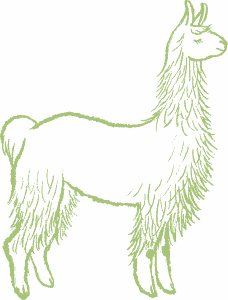
Emotional Benefits
Studies have shown that some animals living in enriched environments are more likely to perceive neutral or unknown things as positive. Enrichment can help foster a sense of safety and confidence, reducing fear of new things and uncertainty. When done appropriately, enrichment can foster curiosity, interest, excitement, happiness, and contentedness in residents.

A Life Without Enrichment
We have looked at the benefits of enrichment. Now let’s look at how a lack of environmental enrichment can affect the lives of nonhuman animals living in human-managed spaces:
Barren Living Spaces
Many studies have shown that barren living spaces are correlated with boredom. Depression, frustration, and anxiety are the unfortunate results when human and nonhuman animals alike live a life in a bare, never-changing space without any cognitive stimulation. This can result in increased confrontations between residents, stereotypic behaviors, as well as other negative emotional states.
Of course, routine and structure are wonderful things that can provide a sense of security for residents, forming a great foundation from which to offer sources of novelty, opportunities for natural behavior, and cognitive engagement and development.
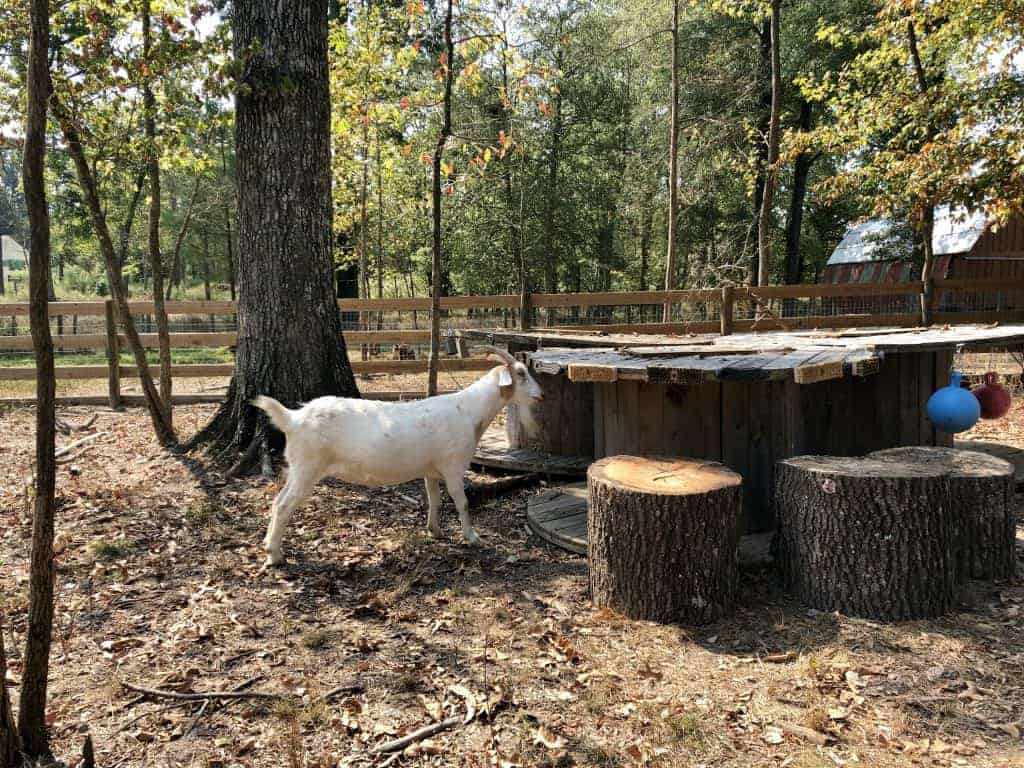
Social Isolation
In addition to barren living spaces, we know social species are terribly affected by isolation. Dr. Dhruv Khullar of the Weill Cornell Medical School in NY City tells author Jane Brody there is good evidence that loneliness and social isolationIn medical and health-related circumstances, isolation represents the act or policy of separating an individual with a contagious health condition from other residents in order to prevent the spread of disease. In non-medical circumstances, isolation represents the act of preventing an individual from being near their companions due to forced separation. Forcibly isolating an individual to live alone and apart from their companions can result in boredom, loneliness, anxiety, and distress. cause “…disrupted sleep, abnormal immune responses, and accelerated cognitive decline among socially isolated individuals.”

“…When isolated, a cowWhile "cow" can be defined to refer exclusively to female cattle, at The Open Sanctuary Project we refer to domesticated cattle of all ages and sexes as "cows." responds with increased heart rate and blood cortisol levels, and begins to struggle and vocalize. But in the presence of other cattle cowsWhile "cows" can be defined to refer exclusively to female cattle, at The Open Sanctuary Project we refer to domesticated cattle of all ages and sexes as "cows.", a previously isolated cow calms, with behavior and blood markers for stress returning to normal.”
If you care for residents, it is likely you have seen the stress that social isolation can cause firsthand. Residents may vocalize, pace, panic, or become dull and depressed. They may even stop eating.
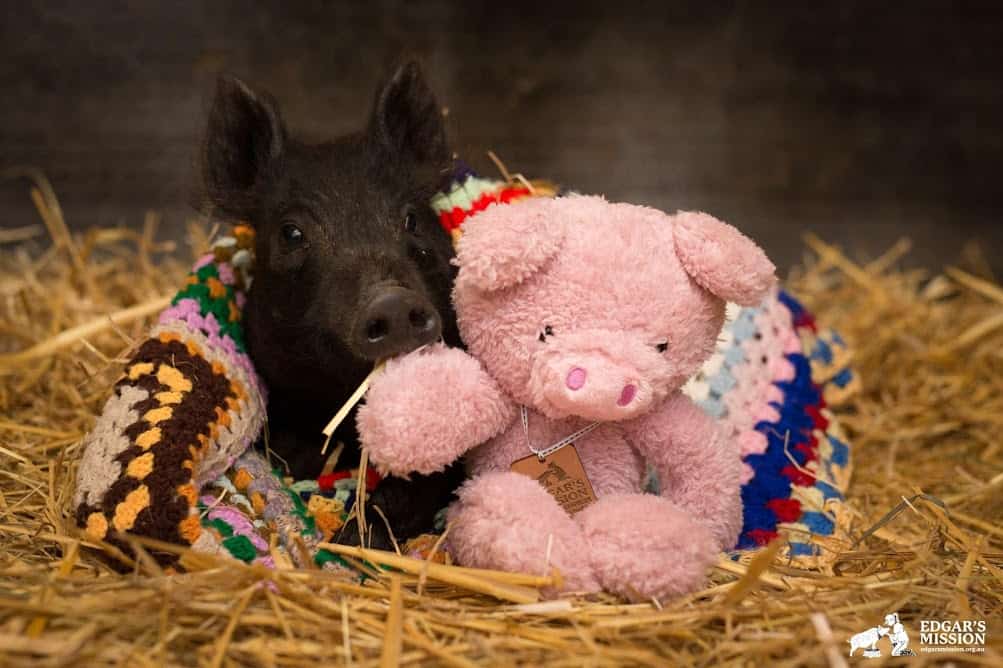
Ensuring residents have appropriate social contact is vital and there are enrichment options available for those who must be temporarily separated!
Lack Of Choice And Control
Studies have shown a lack of control over one’s environment can be an extreme stressor, causing poor welfare in human and nonhuman animals alike. This has been observed in a number of species. Obviously, caregivers sometimes have to make decisions for residents that they wouldn’t make for themselves for the sake of their health. This makes ensuring they have agency in other situations (and as much agency as possible in less comfortable situations) extremely important. Without choices to make for themselves, individuals can feel anxious. When possible, it is important to provide residents with choices, allowing them a level of control over their lives and how they would like to spend their time. It also means we should strive to interact with and teach residents that certain experiences once deemed negative can be positive. This can increase their own voluntary participation in health checks, transport, and other potentially stressful scenarios. We will discuss how you can make space for resident choice and participation in the context of potentially stressful situations in a future resource. Enrichment is a great way to introduce choice to an environment which allows residents to develop preferences and, in turn, allows caregivers to get to know residents better.
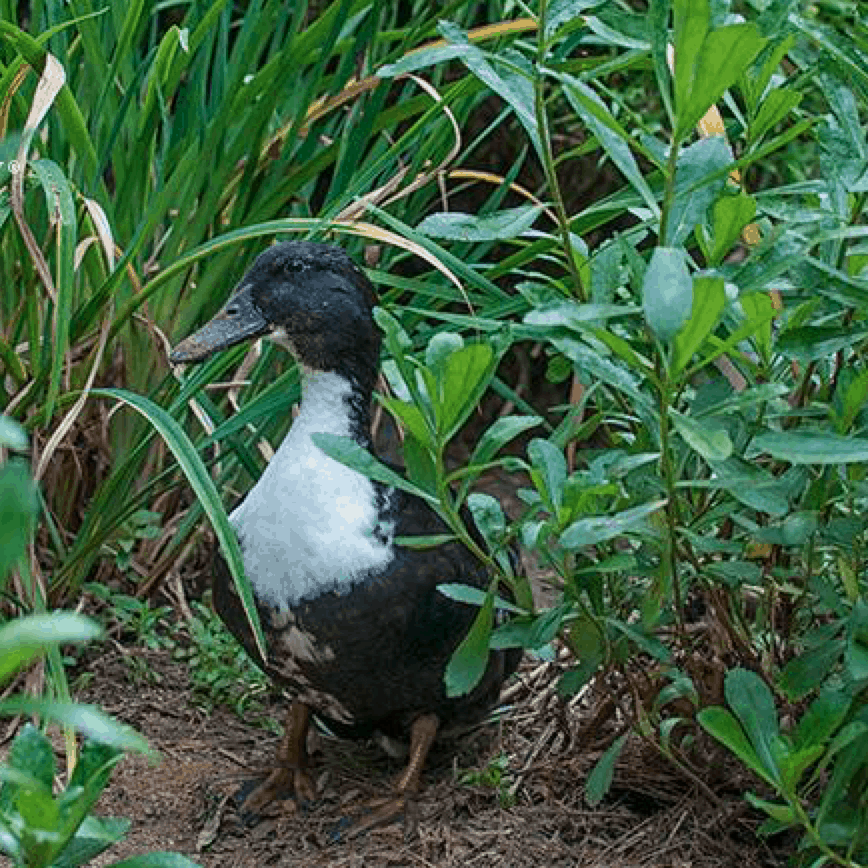
Lack Of Cognitive Challenges
A lack of cognitive challenges has been associated with the development of abnormal or stereotypic behaviors and negative emotional states, such as boredom, anxiety, and depression. Activities such as procuring food, developing relationships, and learning new behaviors and skills to adapt to the environment are things many species share. While many domesticatedAdapted over time (as by selective breeding) from a wild or natural state to life in close association with and to the benefit of humans species have been bred in ways that have altered their natural behavior, there is still the drive to perform many of these behaviors that they would have relied on in less controlled environments.
For example, you can provide pig residents with food in a food dish. However, pigs are generally driven to search for and root for food and may find the opportunity to solve food puzzles rewarding, even more so than just eating food from a bowl that doesn’t require any additional action or thought. Many studies have shown that a number of species would rather engage in a cognitive task to gain access to an interesting stimulus than simply be provided the stimulus. This is called contra freeloading and we will talk about that in another resource!
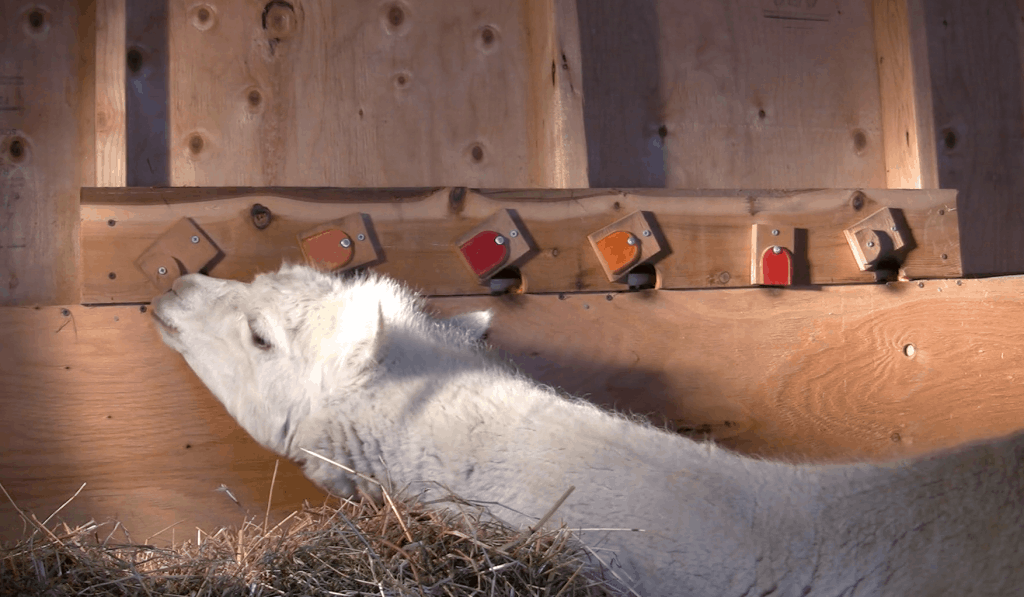
The commonly discussed “clicker training/teaching” (We prefer to use the word teach instead of train. You can learn more about why here.) is another possible source of cognitive challenges that utilizes positive reinforcement to help residents learn different things. Positive reinforcement is strongly associated with positive feelings when done correctly and can be a great way to incorporate cognitive challenges in sanctuary environments while also building communication and understanding between caregiverSomeone who provides daily care, specifically for animal residents at an animal sanctuary, shelter, or rescue. and resident. A lack of challenges and opportunities for cognitive development can have a detrimental impact on residents.
Balancing The Stress Of Challenges
While cognitive challenges can benefit residents, it is true that they can sometimes cause some amount of stress if they become frustrated or confused. It is important that you choose challenges that are within the capabilities of residents as a species and as individuals. Not all stress is bad stress. Prolonged stress is unhealthy, and intense stress due to fear, confrontation, frustration, or confusion is also unhealthy. However, reasonable challenges have been shown to improve the welfare of many animals in captive environments. These challenges are those that have solutions, problems that can be solved. Reasonable challenges can help residents develop and participate in certain natural behaviors that they might not otherwise.
We hope this has been a helpful introduction to the wonderful world of enrichment and why it can be so important for improving the lives of residents! Check out the next resource in the enrichment series, Categories Of Enrichment! For suggestions on how to create an enriching life for residents, simply search “enriching” in our search bar and you will find a number of species-specific resources.
Infographic
The Importance Of Enrichment by Amber D Barnes
SOURCES:
Investigating Animal Boredom | Faunalytics
Dogs And Pigs Get Bored, Too | NPR
From Ants To Apes, The Lonely Die Young | NCPR
Environmental Enrichment Reduces Signs Of Boredom In Caged Mink | PLoS One (Non-Compassionate Source)
Neural Consequences Of Environmental Enrichment | Nature Reviews Neuroscience (Non-Compassionate Source)
Is Boredom An Animal Welfare Concern? | Animal Welfare (Non-Compassionate Source)
Evaluation of Animal-Based Indicators to Be Used in a Welfare Assessment Protocol for Sheep (Non-Compassionate Source)
Effects Of Environmental Enrichment On Behaviour And Productivity Of Growing Pigs | Animal Welfare (Non-Compassionate Source)
The Effect Of Environmental Enrichment On Learning In Pigs | Animal Welfare (Non-Compassionate Source)
Environmental Enrichment Induces Optimistic Cognitive bias In Rats | Animal Behavior (Non-Compassionate Source)
Early-life short-term environmental enrichment counteracts the effects of stress on anxiety-like behavior, brain-derived neurotrophic factor and nuclear translocation of glucocorticoid receptors in the basolateral amygdala | Scientific Reports (Non-Compassionate Source)
The Challenge Of Challenge: Can Problem Solving Opportunities Enhance Animal Welfare? | Applied Animal Behaviour Science (Non-Compassionate Source)
If a source includes the (Non-Compassionate Source) tag, it means that we do not endorse that particular source’s views about animals, even if some of their insights are valuable from a care perspective. See a more detailed explanation here.






